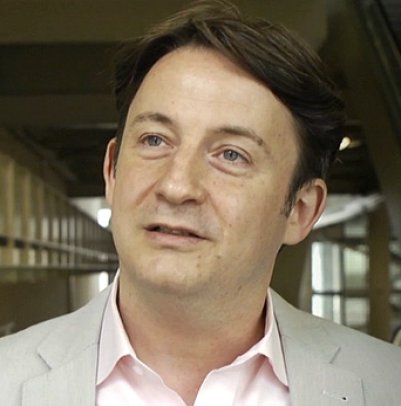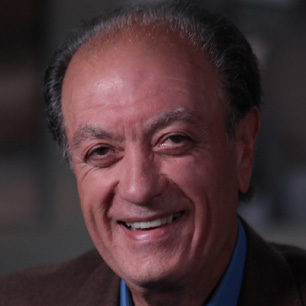



When Warren Buffet gave over $30 billion to the Bill and Melinda Gates Foundation, one word turned up consistently in the media coverage: “fun.”
 Warren Buffet
Warren BuffetThe foundation’s official announcement of the gift read, “Warren’s wisdom will help us do a better job and make it more fun at the same time.” Buffet himself explained his decision by saying, “Over the years I had gotten to know Bill and Melinda Gates well, spent a lot of time with them having fun and, way beyond that, had grown to admire what they were doing with their foundation.” On the Charlie Rose show, Bill Gates said of Buffet, “The thing that stunned me the most after I met Warren … was that he was really having fun. I knew how to have fun, but not at that level.”
Observers like PC Magazine’s John Dvorak picked up the thread: “[Gates] will now have the stature of a King rather than that of a savvy entrepreneur. Big difference, and more fun.”
Here at Giving Magazine, that got us thinking. Is fun an essential element of philanthropy? Should philanthropists expect to have fun? What kind of fun? Is it possible to have too much fun? Clearly it’s important for anyone to enjoy their work, if they want to do it for long. On the other hand, the word “fun” conveys a sense of frivolity that seems wholly out of place when talking about responsible giving.
Which is why Alexis de Raadt-St. James, a philanthropist based in San Francisco, cringed when she heard Gates use the word. “The first thing that came into my mind was, this is too flippant,” she said. “Somebody didn’t coach him very well.”
 Alexis de Raadt St. James
Alexis de Raadt St. JamesDe Raadt-St. James, who is the CEO of her family’s Althea Foundation, is deeply engaged with a portfolio of causes that are about as un-fun as can be imagined: mental health, depression, suicide and death. She was spurred into philanthropy by a series of traumatic events, including the deaths of loved ones and the 9/11 attacks, which left her shaken and anxious to help others. She has no interest in gala balls. “I don’t like the word fun at all,” she said. “I think it’s so trivializing.”
So when she heard the coverage of the Buffet gift, she sat down and wrote Gates a letter, explaining that, as a fellow philanthropist, she didn’t think that “fun” was the best word to use, if only because it would give people the wrong idea about philanthropy. “I would never use that word to describe what I do,” she said. “I work very hard at what I do.”
But even a short conversation reveals that de Raadt- St. James does draw great pleasure from her work, even when it has nothing to do with fun at all. Furthermore, it is clear that the pleasure helps drive the work and ultimately makes her effective.
Among de Raadt-St. James’s proudest achievements, for example, is a death-notice protocol – basically, a conversation guide that can be used to help health care professionals, military personnel, or friends and family notify others of the death of a loved one in the best possible way, minimizing the trauma experienced by both the bearers and the recipients of the shocking news. Her own personal experiences and subsequent conversations with soldiers and others convinced her that people need help navigating these singularly painful moments.
“I’ve had grown [military] men in my office in tears, telling me, ‘It killed me to say this. It killed me to talk to these parents,’” de Raadt-St. James said. So she spent years and over a million dollars to develop a death notification guide based on the highest psychological and medical standards. Today, her protocol is available to the public for free, and it is used by the U.S. military and the U.K.’s Scotland Yard.
And as serious as such a project is, de Raadt-St. James readily admits that she enjoys both the process and the results. Developing the protocol allowed her to combine her skills in education, science and communications. Now that it is in use, she gets a steady stream of letters and emails from users who tell her how much her work has helped them. “These are things that are helping change people’s lives,” de Raadt-St. James said. “It’s not glamorous, it’s not sexy, but it is fulfilling. Incredibly fulfilling.”
While that may not be “fun,” exactly, it is close. “Fun, I think, is another word for fulfillment,” she said. “And I receive great rewards from what I do. Handing someone a dollar won’t change their lives. But giving someone a modicum of hope, that can be transformative.”
Ultimately, de Raadt-St. James’s problem with Gates’ statement was more semantic than anything else. Her concern was that the foundation sent the wrong message about its seriousness. But if managing huge ambitious projects worth billions of dollars is “fun” for Bill and Melinda Gates, she said, then that can only be a good thing; it will increase the chances that they’ll stay engaged and be effective.
Kevin Murphy believes in fun, and he’s not afraid to say it. Murphy runs the Berks County Community Foundation, just outside of Philadelphia and is also the Chair of the Council on Foundations, a membership group based in Washington, D.C., including the Bill and Melinda Gates Foundation.
 Kevin Murphy
Kevin MurphyMurphy’s is the kind of foundation that gets involved in every kind of project imaginable, from scholarships to environmental protection to historic renovations. Doing so requires him to deal with donors large and small, from first-timers to long-timers. When he spoke to Giving, he was in the midst of preparing a dinner for prospective donors. His menu included tilapia in a mango-tequila sauce. Fun was definitely on the evening’s agenda.
But for Murphy, “fun” means a lot more than a nice dinner party. Fun means engaged, effective donors. “Fun and effectiveness – it’s not a very big leap,” he said. “None of us do very well at a job that we don’t enjoy. Whether you’re a CEO or a basketball player – it doesn’t matter – you’ve got to enjoy what you do to be effective at it.”
So when Murphy is getting to know a particular donor, one of his first challenges is to find out what is going to engage that person. That, in turn, requires some careful probing. “I ask, when you wake up at night, what are you worrying about?” he said. “Because [having] fun is about making an impact, so you don’t have to worry about it anymore.”
 Melissa Berman
Melissa BermanMelissa Berman, CEO of Rockefeller Philanthropy Advisors, echoed Murphy’s words. “The issue of fun is a very powerful one for many of the donors we work with,” she said. Donors who enjoy themselves and their work are more engaged, make more gifts, and ultimately stay longer in the field, she said. “We think it’s in the interest of the nonprofit sector for philanthropy to be engaging and addictive.”
Like Murphy, Berman’s first step with a prospective donor is to help them chart a course that they will enjoy following. She sits down with clients and looks for the answers to four sets of questions: • First, what are your motives? What brings you to the field? Why are you giving? What do you hope to get out of it? • Second, what issues engage you? Is there a particular area of concern? • Third, do you have a preferred approach to solving the problem? • Do you want to work locally, or globally, or at a policy level, or a direct service level? Do you want to use a tried-and-true method, or experiment with new approaches? • And finally, Berman asks, how, specifically, do you want to be involved? Do you want to be heavily engaged? Do you want to stay in the background? Do you want to travel the world? Do you have obligations that keep you close to home? Armed with answers to questions like these, Berman said, she can help clients avoid getting involved in things that they don’t enjoy. “Philanthropy is a voluntary decision,” she said. “If it’s something you have to do, it’s work. If it’s something you have to pay, it’s a tax. Philanthropy shouldn’t be work, and it shouldn’t be a tax.”
 Andras Szanto
Andras SzantoAnd just as those who advise donors must consider the pleasure principles, so too must those who solicit donations. “People are motivated by pleasure,” said Andras Szanto, an advisor of the Wealth & Giving Forum, a New York-based organization that helps high-value individuals and families network among themselves. “Why shouldn’t philanthropy be like anything else? We are in a very unusual stage in history where we have a large number of people who can ask, ‘If I’m not having fun, then why am I here?’”
Institutions and organizations have no choice but to consider their prospective donors’ definition of “fun,” he explained. “The other day I was at the opening of the fall season at one of the major music organizations here [in New York]. The gala, you know,” he said. “And I looked over the audience, and half of them are in their tuxes and gowns. But the other half is in their regular concert-going attire. And I’m thinking to myself that this institution may be in trouble a few years down the road. One generation’s fun is not another’s.
“As we go through a cultural change in philanthropy, as a new generation comes in, the definition of fun changes. They might be trying to attract people to a gala who would rather be in a tent in the rain forest.”
So the word ‘fun,’ despite its lightweight implications, actually represents a profoundly important concept for everyone in the philanthropic field. Advisors need to consider it to help donors make good decisions. Would-be grantees need to consider it in order to attract donations and keep donors engaged. Donors need to consider it if they are to understand which of countless options for investment and involvement suits them best.But is there a danger in too much fun? There is, givers and advisors say, and it arrives when the donor’s pleasure takes precedence over the work needed to serve the philanthropic mission. “I suppose that the dark end of this is a form of narcissism – you’re just in it for yourself,” said Szanto. “As with anything, there are extremes. You don’t want philanthropy to turn into an action sport.”
 Keith Whitaker
Keith WhitakerThe solution, donors, advisors, and grantseekers say, is to make sure that the giver understands the recipients' intention and that the goal is not to have fun, but to make the work fun. Keith Whitaker, a philanthropist in his own right and also a fellow at Boston College’s Center on Wealth and Philanthropy, has seen people get in trouble by aiming for fun as an end in itself. “Almost every client we see comes in with this as an underlying psychic state: ‘I want to have fun with my kids in our foundation,’” he said.
The problems come, Whitaker said, as the work – along with conflicting opinions about the work – piles up. His solution is to steer such donors away from questions about what they want personally, and towards questions about what their grantees need.
Focusing on the outcomes has the ironic result of making the work more fun. “One of the best things that an advisor can do is say, ‘Your fundamental instincts are correct. It’s your money, and just think of the great things you can do with it that will add to your happiness and your family’s happiness.’” Whitaker said. “What’s made it more fun [for many families] is really being clear about the family’s roles, and understanding the recipients’ needs – looking to others.
“I’m not trying to distinguish happiness from work. Happiness is work. Do I want my life to be about sitting back and drinking margaritas? When I talk to folks, I always say, ‘This is going to be lots of fun for you. And it’s also going to be a lot of work.”
If anyone understands that work is the critical element of successful giving, it’s Mario Morino, the Cleveland- based philanthropist who chairs the Venture Philanthropy Partners and the Morino Institute. What makes a successful philanthropist, Morino said, is not the ability to have fun, but the drive to do the work in the first place. In his experience, that drive is rarely fueled by a desire for pleasure.
 Mario Morino
Mario MorinoInstead, it is powered by deeper forces. “I don’t think ‘fun’ drives somebody,” Morino said. “I think their enduring values are what drives them. The thing that makes the human soul persevere is purpose.” Morino’s personal purpose is to help impoverished children. This springs from a core belief that everyone is entitled to the same shot at education and success that he had. “I was not rich in money, but I was rich in family, and teachers and so on,” said Morino. “I had a great life. I go back to that same neighborhood and now it’s really rough. Those kids don’t have one thousandth of the chance I had to live the American dream.”
The fun he gets from the work comes through the particular methods he uses to pursue his purpose – setting up new projects and watching to see if they thrive. “I love building something,” he said. “The joy comes from building and solving.”
Thus Morino finds a fun means to address a deeply motivating purpose. His challenge to any would-be philanthropists that he meets is to identify their own purpose first, before they think about fun things to do. The purpose is the driving force; the fun is the grease that keeps the wheels turning. Without the driving force, he says, no amount of fun will keep a donor engaged beyond a check-writing level.
Philanthropists’ purpose may come from their religious beliefs, their family’s values, or even from tragic events that changed their life’s course (like de Raadt-St. James’ string of personal losses). But the purpose has to be there.
“If I don’t see one [a purpose] in place, then I know they’re not going to stick,” Morino said. “What is it you really want to do? Know that. Maybe you don’t tell anybody, but know it. Otherwise, you start smoking your own fumes. The whole thing is designed to make a donor feel like God. Fall into that and you start making bad decisions.”
When Morino heard the Bill Gates interview, he immediately recognized the spirit of the fun-loving, problem-solving entrepreneur in action. “I don’t know Bill, but I know a lot of people like Bill,” Morino said. “What they’d say is, ‘This is a bear of a problem, and really tough to solve, and it’s going to be fun to try to solve it.”
But he also recognized a man with a mission that goes beyond pleasing himself. And indeed, if one goes beyond the initial coverage of the Buffet-Gates gift, it becomes clear that both Buffet and Gates are motivated not by a desire to have fun, but a desire to solve a specific kind of global injustice.
In the Charlie Rose interviews, it is obvious that the two men richly enjoy each other’s company, and that they have a lot of fun together. But both Gates and Buffet stressed that they share a desire to grapple with the kinds of health and education challenges that the Bill and Melinda Gates Foundation has embraced. “Bill is an American, but he’s basically a citizen of the world,” Buffet told Rose. “He has a world view. He thinks that the child in India is as valuable as the child next door, and he lives it. It comes out in how his foundation operates.”
It is the last point that sealed the deal for Buffet when it came time to put his billions to work for the public good. Like so many philanthropists, Buffet and Gates are clearly not afraid of fun. They recognize its utility. But just as clearly, they recognize that if the responsible philanthropist is to have fun, it should be fun with a purpose.